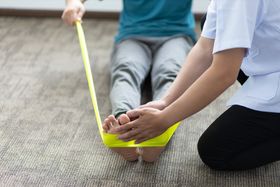Heel Spur Inserts—What Is Right for You?
Updated May 19, 2023

A heel spur is a bony spur caused by the accumulation of calcium deposits on the heel bone. Heel spurs occur because of repeated trauma and damage to the foot muscles and ligaments. The American Association of Orthopaedic Surgeons (AAOS) estimates that at least 1 in 10 people has a heel spur. Of this number, 1 in 20 suffer pain.
If you have a symptomatic heel spur, then you should be aware of conservative treatment methods that can minimize your pain and control any other symptoms you have. To learn more about these conservation methods, take a look at our post on how to massage heel spurs.
Using Inserts as a Treatment Option for Heel Spurs
Heel spurs can be a painful and uncomfortable condition to manage. While rest, ice, compression, NSAIDs, steroid shots, and stretching exercises all help with its symptoms, heel inserts for bone spurs have been shown to be an effective treatment option for those suffering from the condition.
Research suggests that heel inserts redistribute pressure on the foot, cushion the heel, and improve shock absorption during walking or running. This reduces the discomfort caused by heel spurs and can significantly improve the quality of life of anyone with heel spurs.
Using heel inserts as a part of a comprehensive treatment plan for heel spurs can promote healing and fast-track pain relief. Though non-invasive and cost-effective, it should be noted that heel inserts for bone spurs may not be a complete cure for the condition.
If you are considering heel inserts as a treatment option for your heel spurs, you should speak with your healthcare provider. They can provide you with guidance on the best type of insert for your specific needs and help develop a comprehensive treatment plan to manage your symptoms.
How to Choose the Right Inserts for Heel Spurs
Heel inserts can be an effective treatment option for heel spurs. However, selecting the right insert is crucial in ensuring that you get the best results. While the wrong type of insert can worsen your symptoms and increase your discomfort, choosing the right insert for your condition can help you manage your symptoms effectively and improve your quality of life.
The most expensive inserts are not always the best choice for your condition. When searching for heel inserts for bone spurs or the best insoles for bone spurs, keep these features in mind:
Design
The best inserts for heel spurs come with deep heel cups and cushioning to provide additional stability to the foot. The design also increases shock absorption when walking.
Material
Different materials, such as foam, gel, and EVA insoles, can be used in making heel inserts. Each material has its advantages, but these three materials generally provide the best support, cushioning, shock absorption, and pressure relief.
» Struggling to choose between memory foam and ge insoles? Learn about the differences here
Insole Placement
Depending on the shoes you plan to wear the insert with, decide whether you need a full-length or a 3/4-length insole. Full-length insoles fit directly into the shoe and may require you to remove the pre-existing insole. In contrast, a 3/4-length insole can be placed on top of the existing insole.
Durability
Inserts do not cure heel spurs but can help manage the symptoms. Choose inserts that are durable and will last for a long time.
Custom-Fitted Orthotics
Custom-fitted orthotics designed and recommended by a podiatrist can provide the best results. A podiatrist with years of experience can tailor the insert to your specific needs and ensure that it fits properly.
Personalized Relief for Heel Spurs with Upstep
Upstep Heel Pain Custom Orthotics is the answer to your heel spur woes. Our custom insoles will give your feet the extra cushioning and support they need to stop hurting.
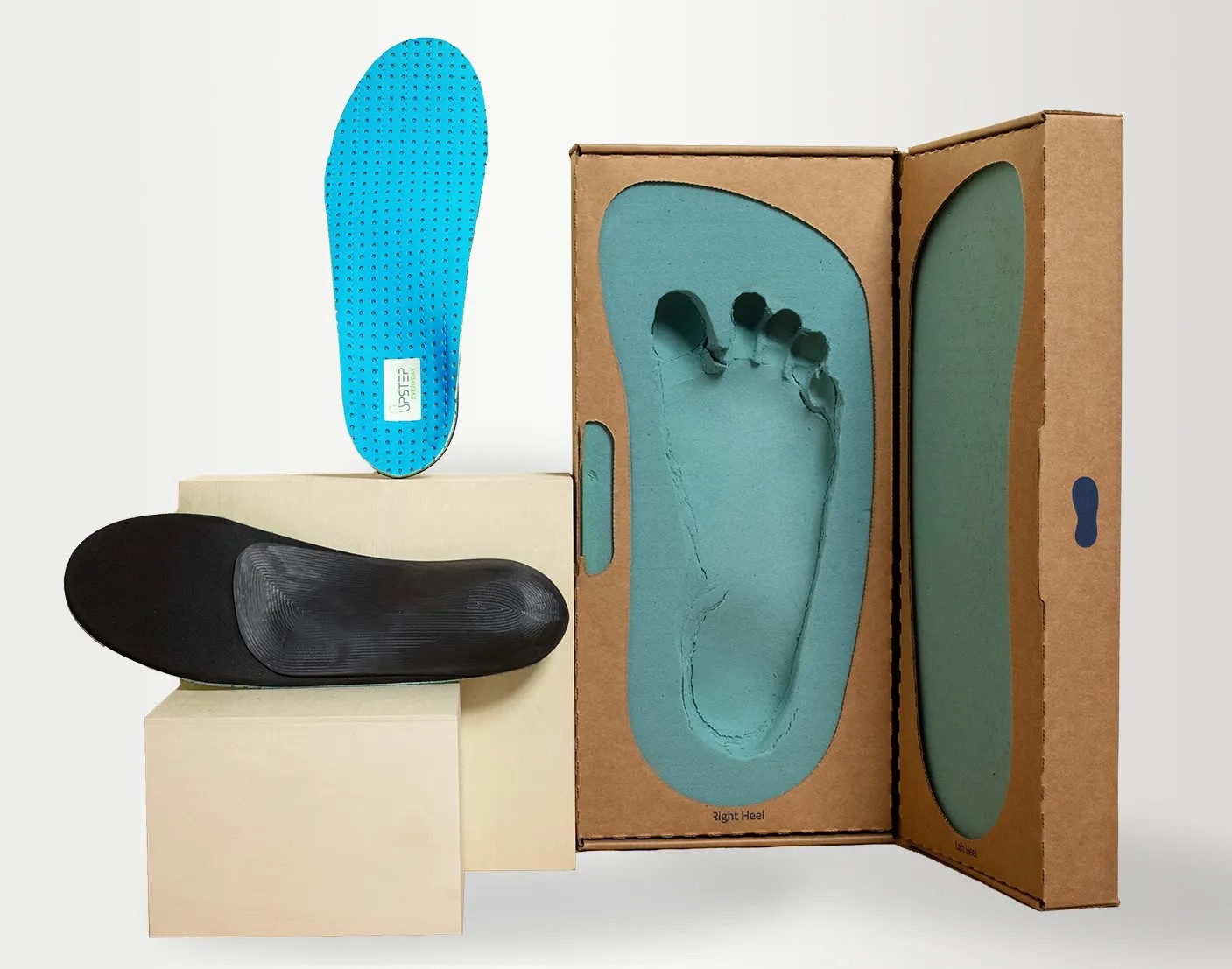
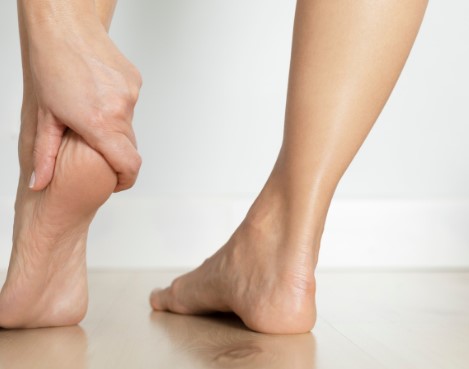
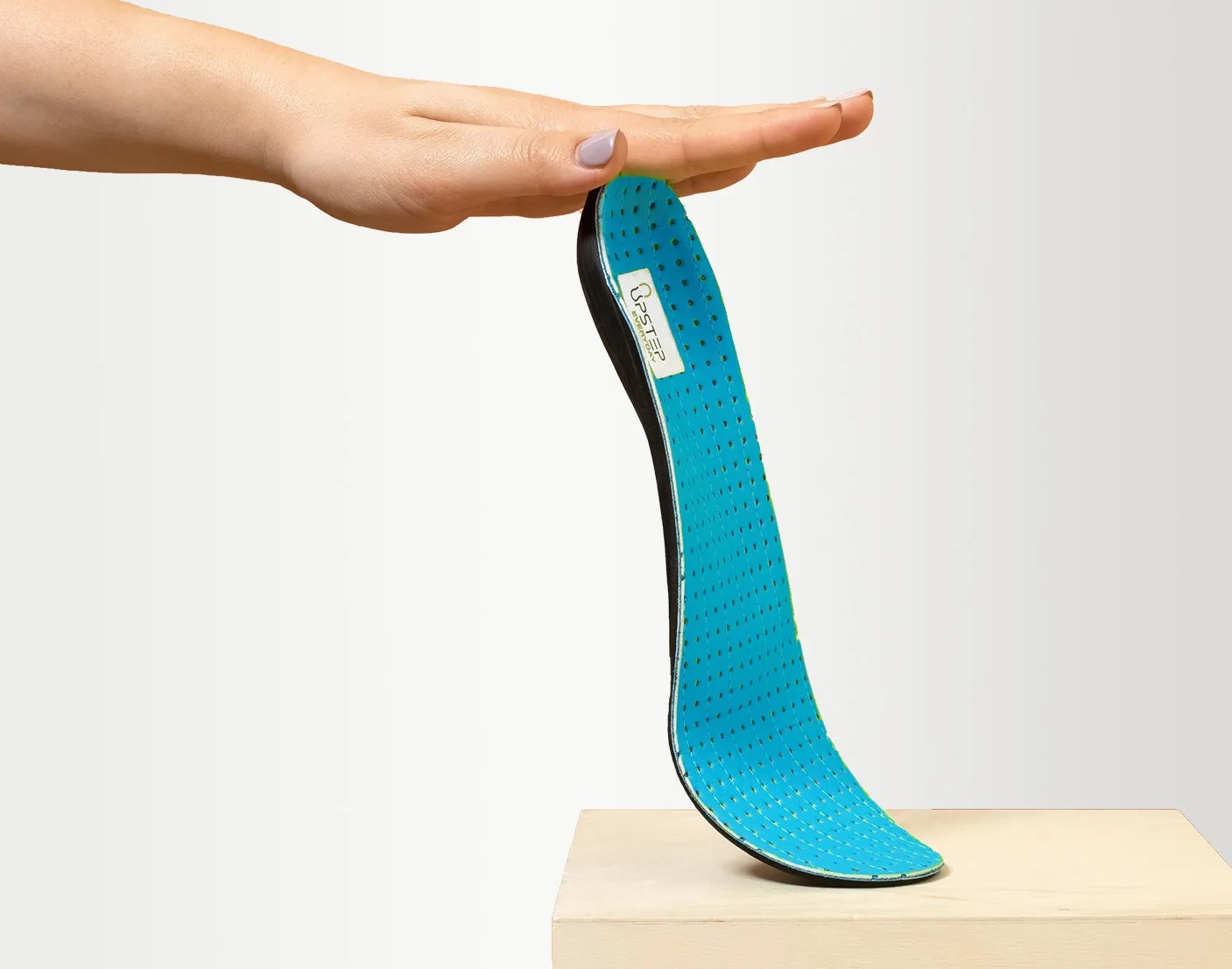
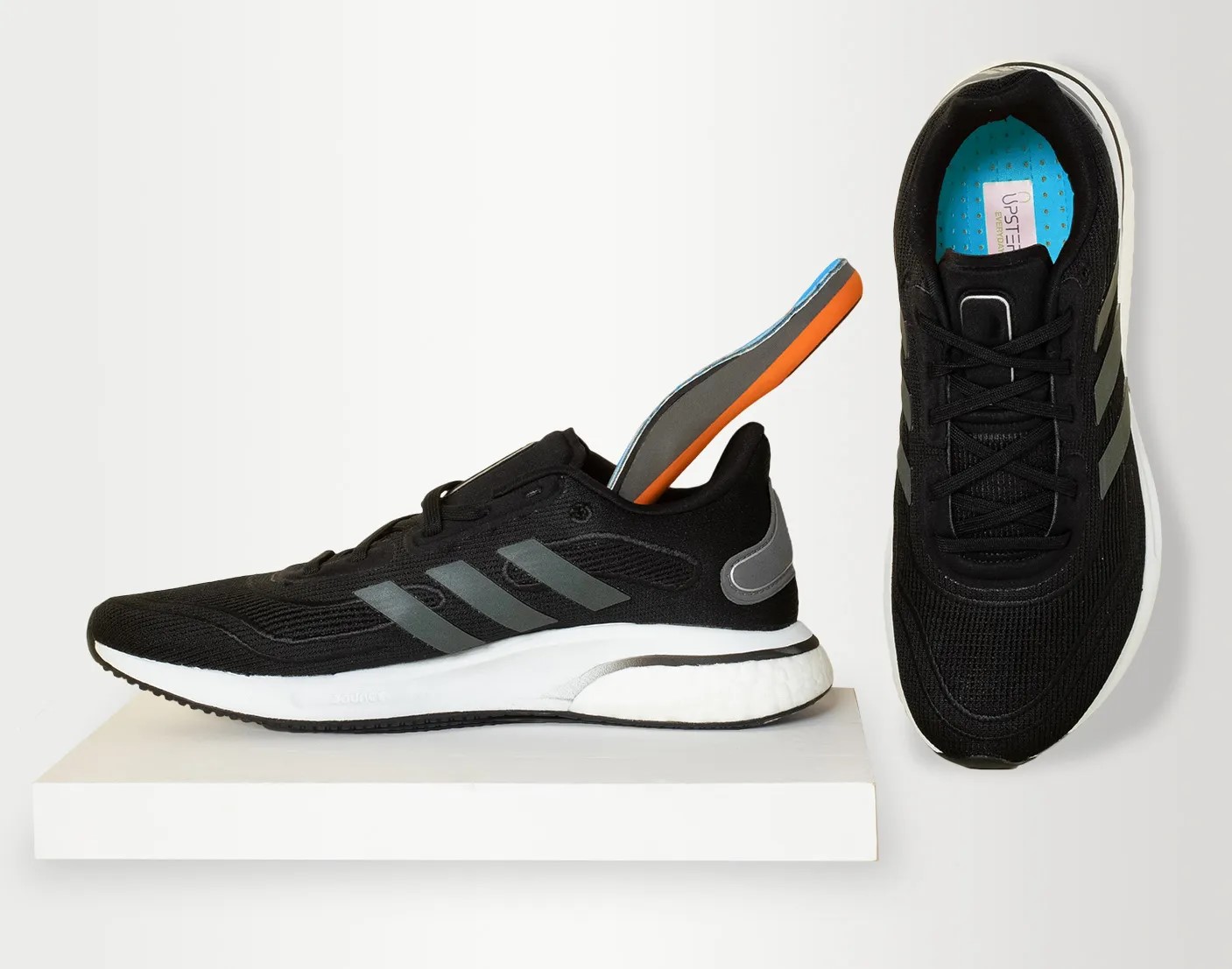
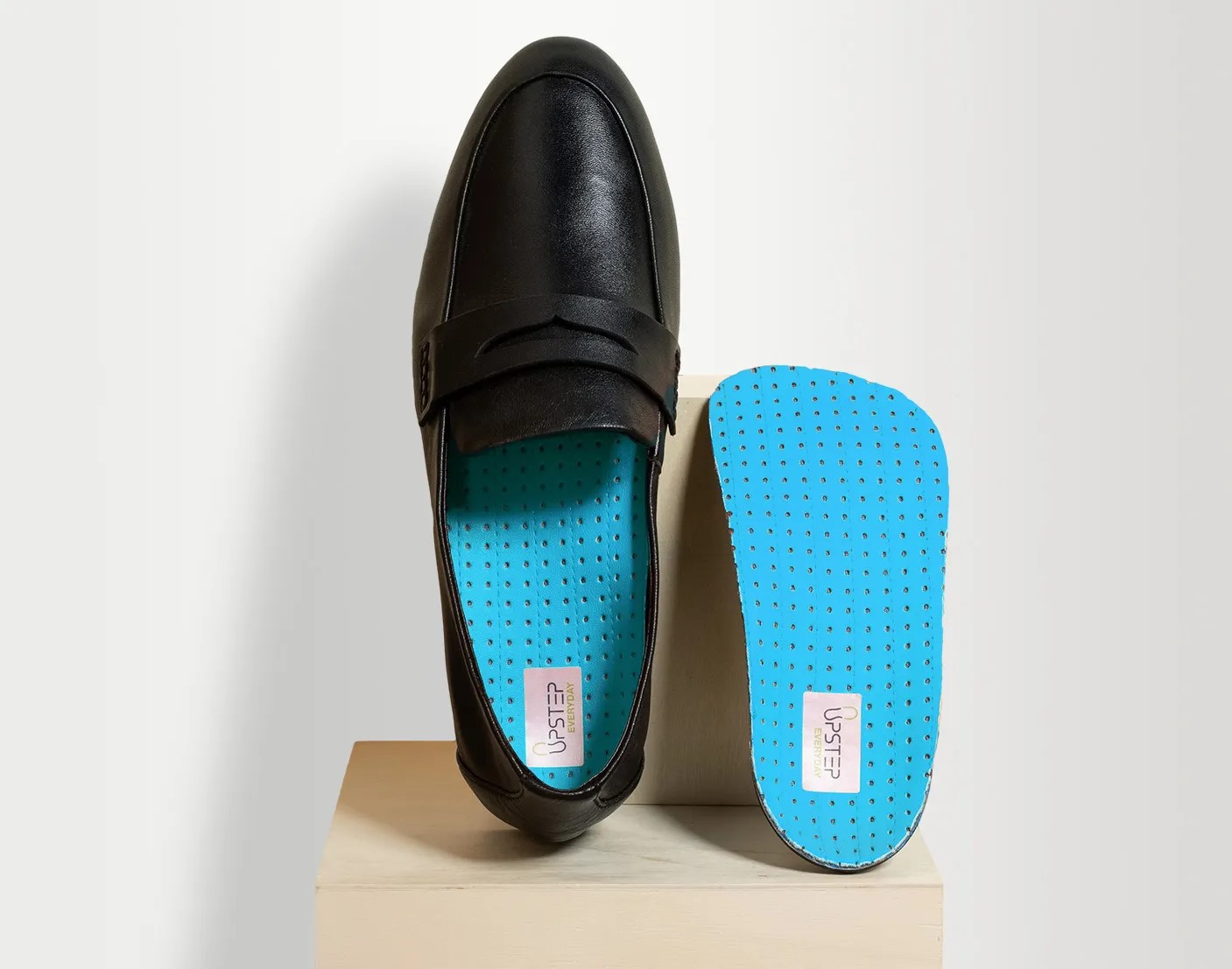
Upstep Heel Pain Custom Orthotics has the following features:
- Custom design and fit
- Extra cushion and support
- FSA and HSA eligible
- 180-day money-back guarantee
The Relationship Between Heel Spurs and Plantar Fasciitis
When comparing heel spurs vs plantar fasciitis, it is essential to note that both conditions are related but distinct. While heel spurs refer to a bony deposit at the bottom of the heel along the course of the plantar fascia, plantar fasciitis is an inflammation of the plantar fascia itself.
Because they often coexist and share similar risk factors, symptoms, and causes, these conditions can be confusing and hard to distinguish. Common risk factors for both include tight calf muscles, obesity, ill-fitting shoes, foot arch type, abnormal gait patterns, and repetitive stress on the heel. Symptoms such as pain, redness, swelling, and tenderness can also be shared.
However, there are still clear differences between the two. For instance, plantar fasciitis tends to cause stabbing heel pain, while heel spurs cause pain in the heel bone. It's also worth noting that plantar fasciitis is more likely to cause heel spurs than the other way around.
Also, when it comes to treating plantar fasciitis and heel spurs, both conditions benefit from orthotic insoles. The best insoles for bone spurs may come with deep heel cups and cushioning to provide additional stability to the foot, which can help manage the discomfort caused by both conditions.
In the case of plantar fasciitis, inserts that provide arch support help reduce strain on the plantar fascia.
NOTE: it's important to consult with a podiatrist to determine the best type of insert for your specific condition.
» Check out the best insoles for treating plantar-fasciitis-related calf pain
Are Orthotic Inserts Necessary for Heel Spurs?
Many people with heel spurs do not experience any pain, and for them, orthotic inserts may not be necessary. However, for those who do experience pain, orthotic inserts can be crucial.
If left untreated, heel spurs can limit physical activity since weight-bearing can worsen the condition. Furthermore, repetitive stress from activities like walking, running, or jumping on hard surfaces can contribute to the development of heel spurs. At Upstep, we offer a range of high-quality orthotic inserts designed specifically for managing heel spurs and related conditions.






